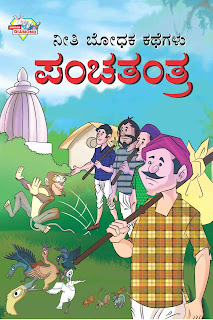Written children’s literature in India has been called “perhaps
the greatest paradox of all,” for India is simultaneously home to “thousands of
children . . . doomed to illiteracy” as well as “the greatest living oral
narrative tradition in the world” that can fulfill the need of every Indian
child for a story (Kamal Sheoran). However, written literature for
children in India is far older than what is normally acknowledged.
The Sangam literature which flourished in
Tamil Nadu from 3rd century BCE to 3rd century CE contains references to
literature produced for children. Manorama Jafa calls the Panchatantra, written in 1st century CE, “the oldest collection of
stories for children in the world”. It was translated into Kannada by Durga
Simha in 1035 CE and constitutes the first book in Kannada for children. In
Telugu literature, the Śataka Sāhitya,
a collection of a hundred poems by an individual writer based on a particular
theme, has always been popular with children. Two Śatakas ̶
Krishna Śataka and Sumathi Śataka ̶ which are seven to eight centuries old are
still studied by school children.
In Assam, in the pre-Vaishnavite period
stretching from 1300 to 1490 CE, Sreedhar Kandal wrote a secular work for
children titled Kankhowa and Ramasaraswati
wrote Bhimacharit for the child reader.
Indira Goswami writes of this book that it “is narrated in an atmosphere of
overflowing rustic humour. The book is so popular among the children that it has
been reprinted several times”.
Amir Khusro, who lived from 1253 to
1325 CE, wrote riddles and a dictionary in verse called Khaliq Bari for children in Urdu. Another seventeenth-century Urdu
didactic poem for children, Maa Baap Nāma,
was composed by Shah Hussain Zauqui. The Shree
Krishnacharitam Manipravalam and Pancatantram
Kilippattu were written in Malayalam in the eighteenth century for women
and child readers (!).
However, only a few such instances of
pre-colonial written literature for children exist in India. Prior to the
establishment and growth of print culture, Indians were noted for their oral
literacy. Oral narrations enjoyed a symbiotic relationship with the community.
The joint family system also ensured that there was always an adult to be found
to narrate a tale.


No comments:
Post a Comment